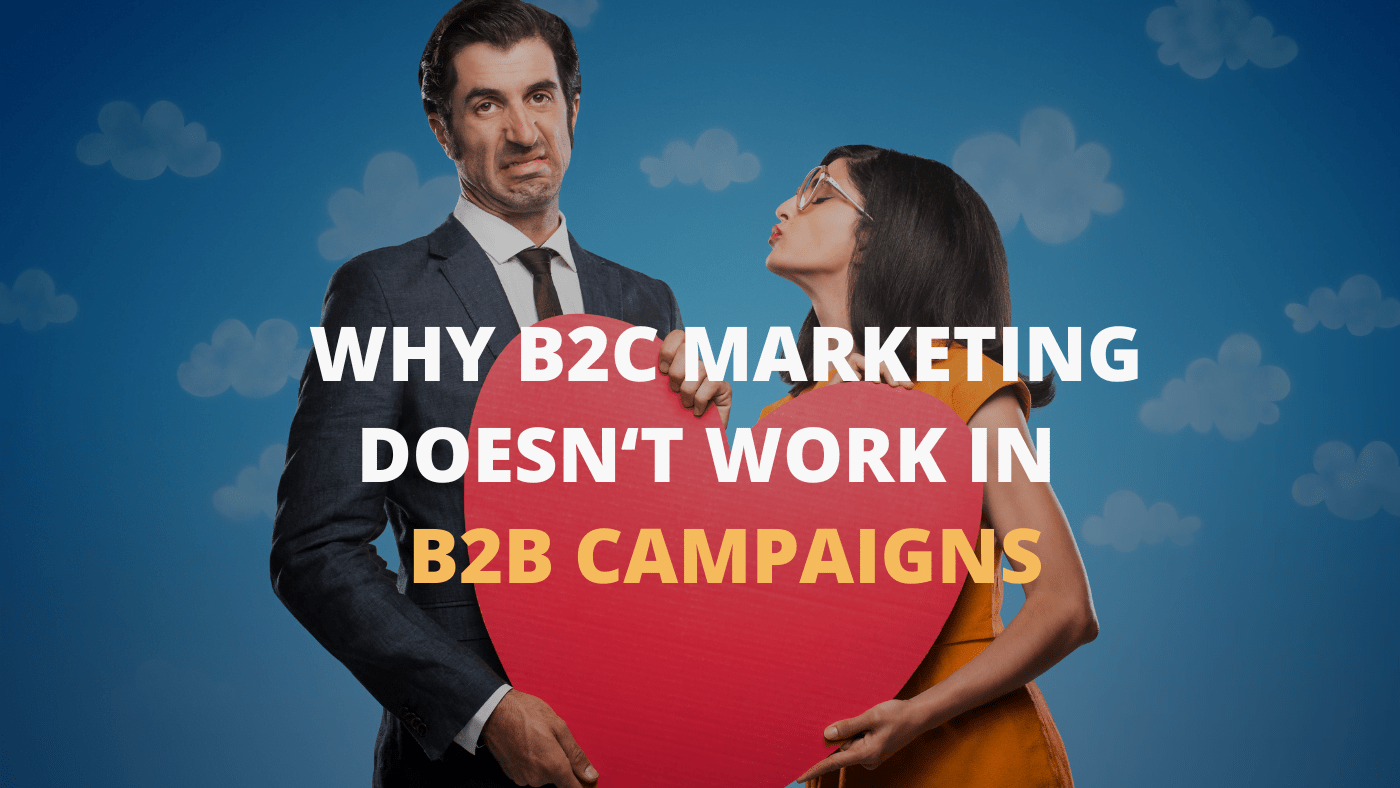
Why B2C Marketing Tactics Fall Flat in B2B Marketing Campaigns(And How to Course Correct)
After over a decade working as a B2B marketing Expert and Specialist, I’ve seen it happen repeatedly: B2B companies shift their thinking to a “business-to-consumer” mentality and apply tactics from B2C, only to achieve underwhelming results. The fact is, B2B marketing Campaigns for targeting other businesses require strategies tailored specifically to how B2B buyers think, research purchases, and make decisions – and those differ vastly from consumer behaviors in B2C
Here are three key reasons why relying too heavily on B2C marketing tactics can spell failure for B2B campaigns:
1. B2B Buying is Complex and Involves Consensus
B2B purchases often come with higher price tags and more complex structures given enterprise-grade capabilities. Unlike consumers making quick buy decisions alone, multiple decision makers typically get involved in B2B purchases, each bringing their own technical, financial and business requirements to the table that must align.

Appealing to a broad general audience matters far less than addressing the specific needs of each role in the B2bB process, like:
- Technical Buyers: B2B buyers are more focused on capabilities, integration requirements, security protections, scalability and reliability
- Business Users: They are more interested in ease of use, adoption potential, training resources and workflow alignment
- Procurement: This is driven by compliance, terms and conditions, total cost of ownership
- Executives: These people are heavily concerned with hard ROI, alignment to strategic goals, and vendor viability.
2. B2B Buyers Demand Hard Data and Metrics
B2B customers take a data-driven approach when evaluating solutions, prioritizing quantifiable performance metrics and a clear return on investment over emotional branding. Rather than responding to flashy images, they scrutinize hard facts behind claims to assess integration capabilities, security protections, and real-world impact.

Vague claims of “best-in-class” speed are less meaningful to B2B customers than benchmarks on transactions per second or other concrete performance data. Back up statements with credible third-party validation like research reports and customer case studies showing quantified metrics and impact. Let the numbers demonstrate how your solution delivers tangible value.
Focus marketing messages on substantive metrics showcasing integration, security, and ROI rather than superficial brand positioning. Lead with real evidence of performance and outcomes to show how your solution measures up.
3. Purchases Tie Directly to Business Goals
B2B purchases directly support core business initiatives that impact the company’s bottom line, rather than consumer whims. Marketing detached from economic buyers’ strategic goals and objectives fails to resonate.
Strategies must align with customers’ specific business aims, priorities and challenges to earn engagement. For example, vague innovation messaging does not resonate as deeply as content sharply focused on helping customers reduce costs, retain users or expand into new regions – outcomes vital to their mission.

Tie ROI and value propositions directly to advancing strategic business goals, not seemingly disconnected from real objectives. B2B customers invest in solutions that clearly map to furthering specific aims fundamental to their success. Anchor messaging to their pressing needs around core initiatives tied to bottom-line results.
Course Correcting to B2B Marketing Campaigns That Works
Effective B2B marketing requires residing in the customer’s world – speaking to their functional reality, backed by hard numbers and a sharp vision for advancing top-level goals.
At its core, it boils down to intimately understanding the day-to-day realities and functions driving the business. This goes beyond merely grasping what a company does at a high level to map out the granular workflows, metrics, challenges and goals guiding stakeholder behavior.
Armed with this functional view, B2B marketing can then speak directly to the real-world priorities and use cases that matter. Messaging anchored around abstract ideas or emotional appeals falls flat versus content sharply addressing reduced operational costs, accelerated time-to-market, risk mitigation and other hardcore business priorities tied to budgets and strategic plans.
What does this look like?
- Address All Buying Personas and Priorities
- Research and map the decision-making team to address technical, business and procurement concerns
- Content and messaging should align to goals and KPIs of each role
- Lead with Concrete Data and Metrics
- Feature quantified metrics aligned to business priorities in all assets
- Include third-party validation like analyst reports and case studies
- Benchmarks, ROI calculators and granular comparisons resonate
- Tie Directly to Strategic Goals
- Anchor messaging and positioning to pressing needs tied to their bottom line
- Demonstrate clear links between solution and core initiatives around cost, efficiency etc.
- Shared vision for advancing objectives beyond the technology
B2C tactics like hyperpersonalization, emotional branding and superficial calls to action don’t deliver results. To succeed in the B2B realm requires going deeper across metrics, expertise and vision.
Does your B2B marketing strategy need a course correction? I have led marketing turnarounds for companies of all sizes. Reach out to me to discuss where your B2B marketing approach could align better to buyer priorities. Or check out my resume at my Home page – Ashish Sharma B2B Marketing Consultant.
Click to contact me for a free Consultation
And if you want to read about how to analyze if your product is fit for the market. Check out this Blog post of me. Your Innovative Product Might Still Fail: 5 Key Factors For Product Adoption
Share this Article
Ashish Sharma
Contact me for Consultation
CHECK OUT MY OTHER ARTICLES

Your innovative product might still fail: 5 Key Factors for Product Adoption
We’ve all seen it happen – a groundbreaking new product hits the market, offering immense improvements over existing solutions. And…

Your Guide to B2B Lead Generation in 2024 with 7 Effective Lead Magnets
For most B2B companies, B2B lead generation in 2024 is a never-ending battle. Breaking through the noise and capturing the…

The Mythical Mirage of Product-Market Fit and How it is bad for your business.
The entire concept of “product-market fit,” i.e., that there is some mystical, universal, and definite tipping point for when you…
